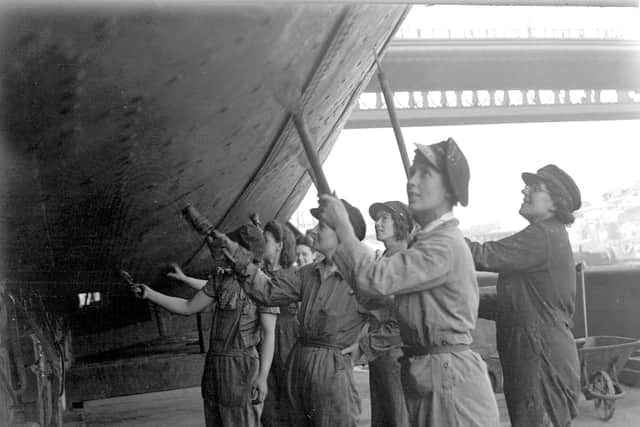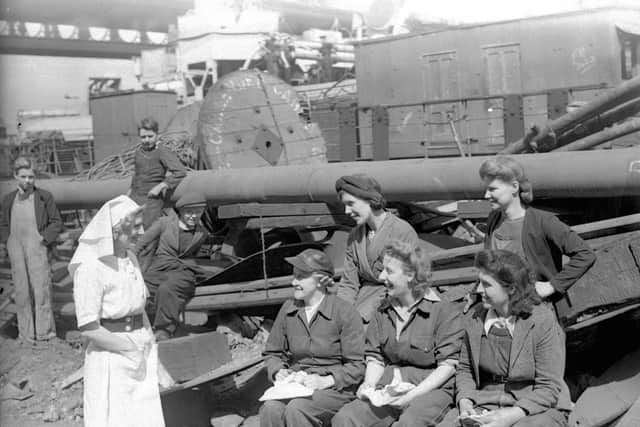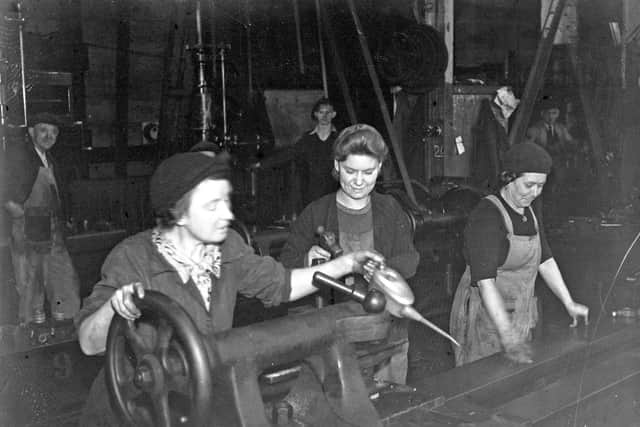The real Wearside women who inspired the best-selling Shipyard Girls series
and live on Freeview channel 276
To mark the release of Shipyard Girls On The Home Front, released on paperback on Thursday, March 18, we’ve had a rifle through our archives to find pictures taken by Echo photographers who chronicled life in the then town during the war.
The images show women working as scrapers, welders and painters in July 1941.
Advertisement
Hide AdAdvertisement
Hide AdAs their husbands, sons and friends fought on the battlefields, hundreds of Wearside women took on the backbreaking work of the shipyards, which were one of the biggest shipbuilders in the world and a vital part of the war effort.


More than 700 women were employed in the yards at the height of the conflict, including 130 at Doxfords, and almost a thousand more found work in marine engineering shops.
For many it was their first foray into the world of work, but it was a new found independence many had to give up when the men returned from the frontline.
Nancy Revell is the pen name of Roker author Amanda Revell Walton whose own family worked in the shipyards.
Advertisement
Hide AdAdvertisement
Hide AdAfter hearing about the real women in the shipyards, she began writing her series in which, although the characters are fictional, their stories are interwoven with real bombings and incidents that Amanda painstakingly researches from historical documents and Sunderland Echo archives.


Amanda, who regularly makes the Sunday Times Bestsellers List with her books, said: “The work that these women did was both backbreaking and dangerous. They were welding, riveting, burning and rivet catching, as well as doing general labouring, operating cranes, and painting the sides of the hulls of ships.
“There was next to no training or any kind of health and safety, so they had to learn on the spot and the conditions they worked in were harsh and hazardous to say the least. Shipyard work has always been labour-intensive, but also notoriously dangerous – and often fatal.”
After a physical day’s labour, the women would then have to return home to run the house.
Advertisement
Hide AdAdvertisement
Hide AdAmanda said: “At the end of their shift – and bear in mind they often worked time and a half, seven days a week – they would go home, look after their families, cook, and clean – all the while worrying about their husbands, brothers, sons and loved ones who were away at war. And they did it all under the constant threat of being bombed because the shipyards were Hitler’s prime target.


"But what’s more, these women chose to undertake such difficult and often perilous jobs in the yards, not only because they needed to work, but also because they wanted to be a part of the war effort.”
One of the real life women mentioned in the historical notes of one of the books is welder Florence Collard, who worked at Bartrams during the war, who Amanda discovered in the Echo archives. Florence was bombed out of her home in Portsmouth, came back to her hometown (Sunderland) and was then bombed out of her home here - and still went to work that afternoon.
The Shipyard Girls finally get the recognition they deserve
Last year, it was announced that a public art work to honour the women will be installed on the former Vaux site as part of the Riverside development, overlooking the site of where the shipyards once lined the Wear.

